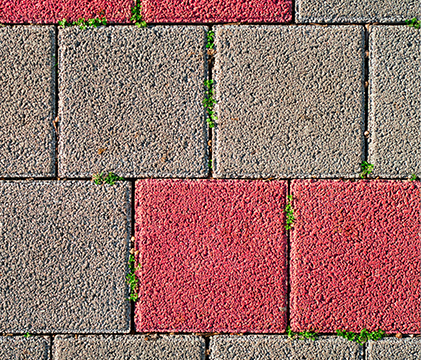5 MOST POPULAR TILE LAYING PATTERNS
When we decide to buy the tiles for our house, their size, color, and texture are not the only thing that we consider. Now there are so many laying options that if you are not aware of them, you might fail to get the maximum out of your favorite tile. In modern interior design, the way tiles are laid is a key to tying the entire room together and making it a visual success. Similarly, the wrong laying pattern can make the room feel chaotic and ruin beautiful décor and furniture. This article will give you essential information about floor and wall tile patterns and help you make the right choice for your space.
HERRINGBONE: An International Hit
Herringbone is one of the most popular tile patterns which has been used for centuries in western as well as eastern designs. However, in the latest interior design trends, we have witnessed a comeback of this pattern. Now it is used in a classic herringbone way as well as used in several variations of sizes and colors.
The reason for the popularity of this design is that it creates a sense of space. It adds a graceful and subtle feel of movement and flow. A variety in texture and color can add more oomph to this classic pattern. Also, it can be kept simple by using a contrasting-colored grout to accentuate the pattern.
BASIC BRICK/ OFFSET: An Authentic Charm
This is probably the most used pattern around use. The basic structures of the houses are laid using this pattern. However, in interiors and on walls, this pattern tends to create an industrial and metropolitan aesthetic look. Since it replicates the basic brick pattern, it has the power to bring the same authentic and strong look into the interior space.
A mix and match of colors and textures can make this basic design a complete modern element of the interior. Several interior designers prefer to use this pattern when they are playing with loud colors because its basic pattern complements the bright and eye-catching colors.
This same pattern can also be laid vertically to create an entirely new visual feel in your space. It is also a good way of adding a sense of height to your space, without making it stagnant and boring.
LINEAR/ STACKED PATTERN: Basic and Beautiful
The linear pattern is the easiest way of laying tiles, without disturbing the design of tiles. This pattern is ideally used when a basic look is required. This style is also ideal for tiles that have a design or pattern printed onto them. Since the design is prominent enough on its own, there is no need to play with the laying patterns.
When a designer wants to play with a variety of colors, they use this pattern to make the overall effect subtle. Same colored and same textured tiles are also laid in this pattern as it makes the tile a more prominent feature. This pattern looks ideal in small-sized tiles as used in bathrooms and kitchen backsplash.
BASKET WEAVE: A Twist of Style
Basketweave is a twist on your traditional linear pattern. In this pattern tiles are laid stacked in the count of three, changing direction alternatively. It has been a popular pattern among contemporary interior designers who wish to keep a traditional feel in their space, at the same time bringing some newness.
This pattern is more popular on walls rather than on floors. It creates a better visual feel on smaller areas thus designers don’t advise its use on floors. It is ideal for feature walls and kitchen backsplashes.
You can make a variation by using different colors or textures. However, it is better to use a monochrome color scheme for this pattern. The subtle variation of colors creates an interesting focal point for the viewer.
MODULAR PATTERN: Unstoppable Style
Modular is a variation of basic brick patterns where more than one tile of different sizes is laid on top of another. When you intend to emphasize the pattern and shapes on your floor or wall, this laying pattern is ideal. It can be created using one design or a certain shape can be made prominent by changing its color or texture. A contrasting color of grout can further embellish an already complex pattern.
This pattern works great with squares and rectangles of various sizes. There is room for playing more if there are multiple sizes available. This pattern is great if you want to utilize several sizes.
It is advised that similar colors be used with this pattern. Since the pattern is itself a great visual attraction, too many colors or textures can make it loud and overbearing.
However, if you use smaller sizes of tiles for this pattern, it gives room to play with colors and textures. Always keep in mind the type of feel that you want to create for your space and then use this pattern, as it is or in variation.
There is no limit to the creative ways in which tiles can be laid. Utilize any of these tile laying patterns to achieve a distinctive and unique interior look.








